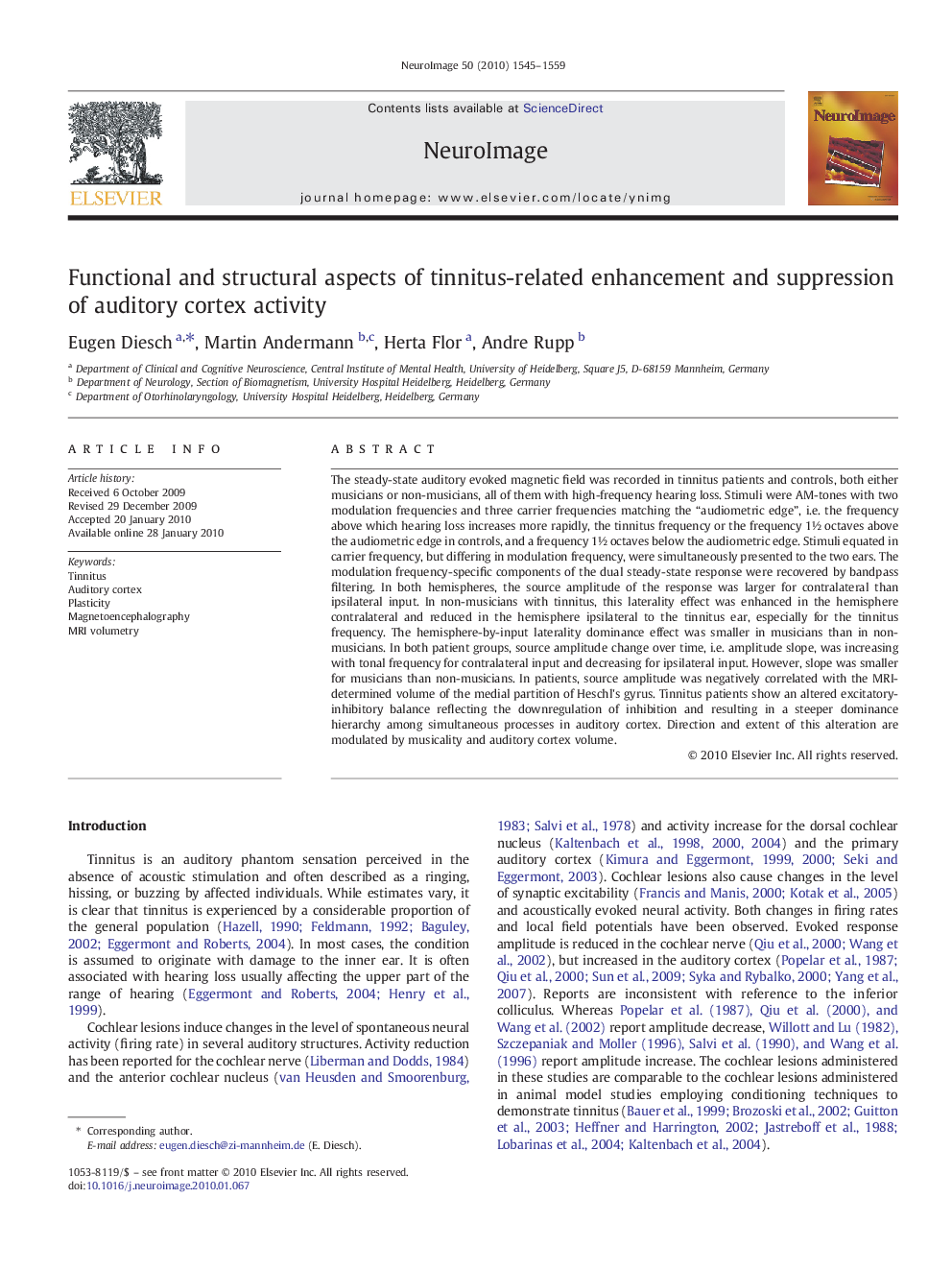| Article ID | Journal | Published Year | Pages | File Type |
|---|---|---|---|---|
| 6037320 | NeuroImage | 2010 | 15 Pages |
The steady-state auditory evoked magnetic field was recorded in tinnitus patients and controls, both either musicians or non-musicians, all of them with high-frequency hearing loss. Stimuli were AM-tones with two modulation frequencies and three carrier frequencies matching the “audiometric edge”, i.e. the frequency above which hearing loss increases more rapidly, the tinnitus frequency or the frequency 1½ octaves above the audiometric edge in controls, and a frequency 1½ octaves below the audiometric edge. Stimuli equated in carrier frequency, but differing in modulation frequency, were simultaneously presented to the two ears. The modulation frequency-specific components of the dual steady-state response were recovered by bandpass filtering. In both hemispheres, the source amplitude of the response was larger for contralateral than ipsilateral input. In non-musicians with tinnitus, this laterality effect was enhanced in the hemisphere contralateral and reduced in the hemisphere ipsilateral to the tinnitus ear, especially for the tinnitus frequency. The hemisphere-by-input laterality dominance effect was smaller in musicians than in non-musicians. In both patient groups, source amplitude change over time, i.e. amplitude slope, was increasing with tonal frequency for contralateral input and decreasing for ipsilateral input. However, slope was smaller for musicians than non-musicians. In patients, source amplitude was negatively correlated with the MRI-determined volume of the medial partition of Heschl's gyrus. Tinnitus patients show an altered excitatory-inhibitory balance reflecting the downregulation of inhibition and resulting in a steeper dominance hierarchy among simultaneous processes in auditory cortex. Direction and extent of this alteration are modulated by musicality and auditory cortex volume.
